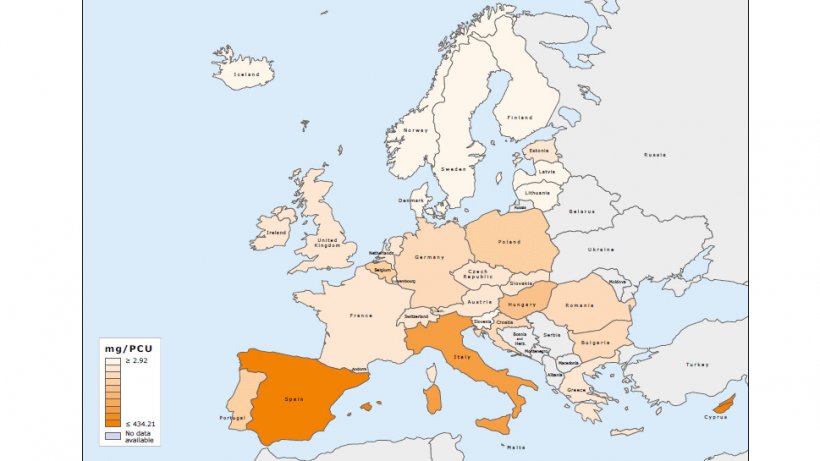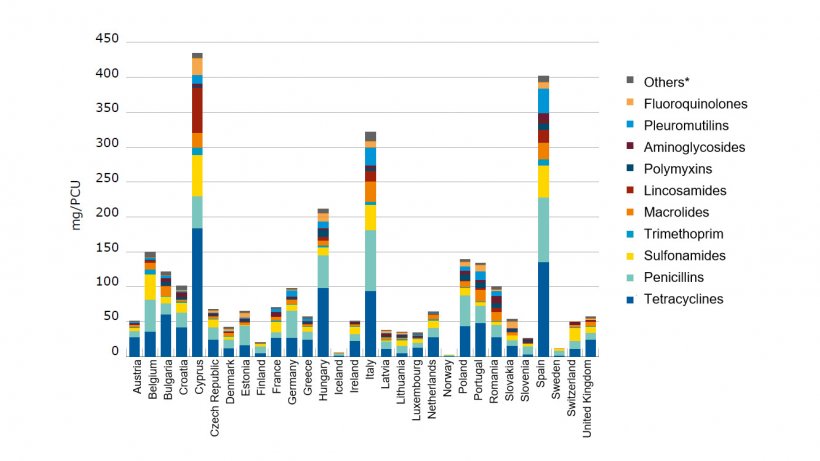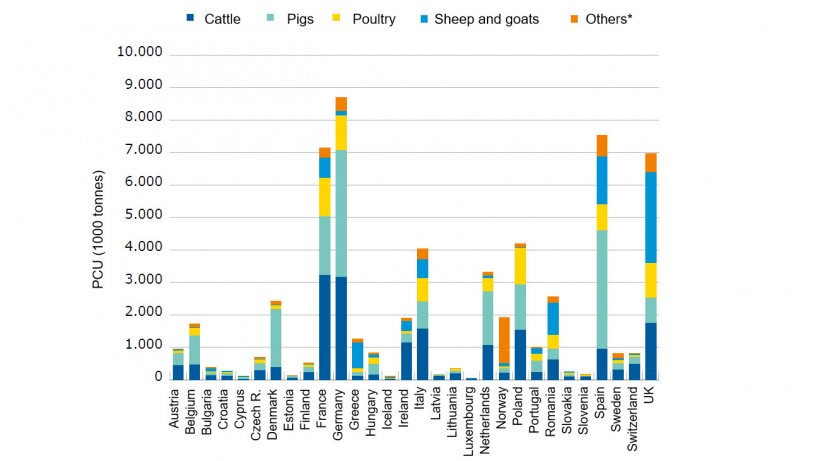In total, 25 countries have provided data for all years between 2011 and 2015. A fall in sales (in mg/PCU) of more than 5 % was observed in 15 of these countries, whilst there was an increase of more than 5 % in eight countries during the reference period. The PCU was stable across the years, with only a 0.8 % increase in the total PCU for these 25 countries, and there was also an overall reduction of 12.7 % in the tonnes sold. For the 25 countries reporting sales data to ESVAC for the years 2011-2015, an overall decline in sales (mg/PCU) of 13.4 % was observed. Sales fell from 163 mg/PCU in 2011 to 141 mg/PCU in 2015.


The PCU for each animal category is calculated by multiplying numbers of livestock animals (dairy cows, sheep, sows and horses) and slaughtered animals (cattle, goat, pigs, sheep, poultry, rabbits and turkeys) by the theoretical weight at the most likely time for treatment.
A large difference in the sales, expressed as mg/PCU, was observed between the most- and least-selling countries (range 2.9 to 434.2 mg/PCU) for 2015; the average sales for all 30 countries which delivered data in 2015 is 135.5 mg/PCU.
Of the overall sales of antimicrobials in the 30 countries in 2015, the largest amounts, expressed as a proportion of mg/PCU, were accounted for by tetracyclines (32.8 %), penicillins (25.0 %) and sulfonamides (11.8 %). Overall, these three classes accounted for 69.6 % of total sales in the 30 countries.

From the antimicrobial classes listed in the World Health Organization (WHO) list (5th revision (http://who.int/foodsafety/cia/en)) of the highest priority critically important antimicrobials (CIAs) for human medicine, the sales for food-producing animals of 3rd- and 4thgeneration cephalosporins, fluoroquinolones, polymyxins and macrolides accounted for 0.2 %, 2.1 %, 6.8 % and 7.2 %, respectively, of the total sales in the 30 countries participating in ESVAC in 2015. Overall, the sales of polymyxins (mg/PCU) accounted for 6.8 % of the total sales in the 30 countries, with only colistin representing all polymyxins. The sales (mg/PCU) of 3rd- and 4th-generation cephalosporins in the 25 countries, that provided data for the years 2011-2015, remained stable within the study period, while an increase of 8 % was observed for the fluoroquinolones. The sales (mg/PCU) of polymyxins (mostly colistin; from 2013 no sales of polymyxin B reported) in these 25 countries decreased by 13 %. From 2011 to 2015, a drop of more than 5 % (range 7 % to 54 %) in the sales (mg/PCU) was observed for 15 countries. An increase of more than 5 % was observed (range 6.5 % to 32 %) for eight countries.
Overall, pigs, cattle, poultry and sheep/goats accounted for 32 %, 31 %, 14 % and 14 %, respectively, of the PCU in the 30 countries.

October 2017/ Seventh ESVAC report-EMA/ European Union.
http://www.ema.europa.eu




